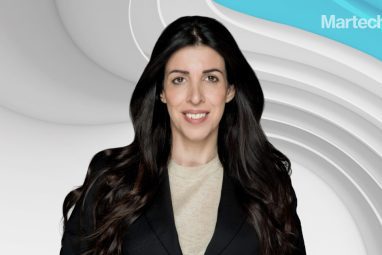Have You Applied S.O.A.P?
Marketing strategist Troy Sandidge talks about the creator economy, marketing strategies and the customer experience tools in 2022 “CX will come down to applying S.O.A.P. — Simplification, Omnichannel-communication, Automation, and Personalisation. Applying S.O.A.P. will help you provide the best customer journey at a level that will consistently evolve and improve your CX deliverables,” said Troy […]
Topics
What to Read Next
- TripleLift Announces Partnership with Attain to Unify Context and Commerce
- Seedtag Partners with IRIS.TV to Expand Contextual Signals for CTV Targeting
- Magnite, Cognitiv Announce Deep Learning Integration for Real-Time Curation
- Dscout Announces Integration with HeyMarvin
- Comscore Launches Program-Level Capabilities within CCM

Marketing strategist Troy Sandidge talks about the creator economy, marketing strategies and the customer experience tools in 2022
“CX will come down to applying S.O.A.P. — Simplification, Omnichannel-communication, Automation, and Personalisation. Applying S.O.A.P. will help you provide the best customer journey at a level that will consistently evolve and improve your CX deliverables,” said Troy Sandidge.
Troy Sandidge is an award-winning marketing strategist known as the Strategy Hacker who creates strategies to increase the growth, authority, and profitability of emerging brands and Fortune 500 companies. The host of iDigress Podcast has also recently published a book Strategize Up, that talks about scaling business.
He believes that marketers in the creator economy will be focusing on community personas and finding overlapping micro-influencers within identified communities to help drive their marketing initiatives. Sandidge also talks about how data can optimise customer acquisition and retention challenges in 2022 and the core of a successful martech stack.
Excerpts from the interview
How can marketers overcome customer acquisition and retention challenges using data?
Marketers need to first understand what metrics, OKRs, and KPIs are essential to capture, measure and quantify to optimise acquisition, retention, and top-line revenue. Marketers will often be forced to be obsessed with a lot of data metrics that don’t move the needle or provide insights on how to maintain what one already has and take them to a greater level of growth.
Knowing the specific data points will help you identify strategies for reducing the acquisition cost, which customers are the biggest buyers, and where the highest and smallest volumes are coming from. They will present solid data to triangulate the shift to increase acquisition and retention sustainably. Don’t forget to apply machine learning methods to create predictive models. There will always be too many variables for a marketer to review independently, and it’s extremely timely. Balancing the number of important variables to track, using machine learning and automation to offset time and cost, and having an analytical roadmap to follow, will help.
How do you see the creator economy changing a marketer’s game?
Creator economy is pushing marketing to a 100 per cent community-first approach. The community has always been important, and with the increasing popularity and a valuation of $13.7 billion last year, it is expected to rise exponentially. Marketers will heavily focus on personalised content, subsets of content and maintain alignment within cultural norms. Instead of focusing on personal personas, marketers will be focusing on community personas and trends, and also find overlapping micro-influencers within identified communities to help drive their marketing initiatives. For marketers to win in the creator economy, they must create for the community, connection, and commanding attention for consistent conversions.
What are the main components of a successful MarTech stack in 2022?
Even today, the core of a successful martech stack will always include a Customer Management System (CMS) for inbound, a Customer Relationship Management, (CRM) for nurturing leads, maintaining active customers, and evangelising relationships for growth, and a Marketing Automation Platform (MAP) for streamlining marketing process, removing system bottlenecks, and amplifying CX. Additionally, one uses social media as it’s the highway to the building community, and email marketing as it’s still the only proper channel that a business owns, which is not predicated on algorithms or third-party rules.
What should be a top priority for a brand that wants to improve customer experience?
A top priority should be the inside-out/top-down approach. You must activate, empower, and connect your internal team and employees to provide a CX worthy of satisfying a dynamic audience. The very best brands create the best customer-centric companies. Once that is created (and readily maintained), it will come down to applying S.O.A.P. — Simplification, Omnichannel-communication, Automation, and Personalisation. Applying S.O.A.P. will help you provide the best customer journey at a level that will consistently evolve and improve your CX deliverables.
If you liked reading this, you might like our other stories









































































































